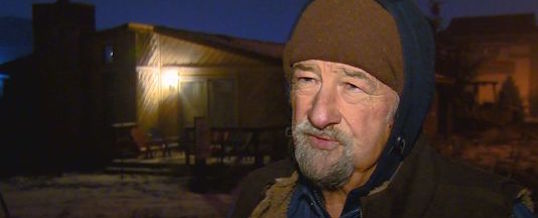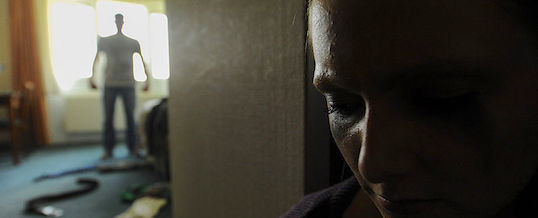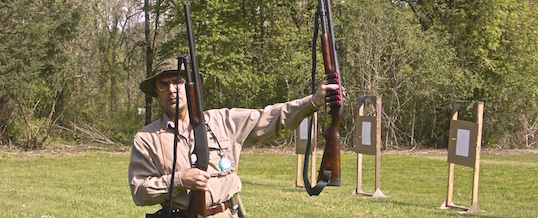
Incident Analysis: Warning shots are a bad idea, especially when the run you out of ammunition.
Over at The Firearm Blog we read the story of one Bart Bryson. In investigating what appeared to be a burglary in progress he made a number of really bad decisions that could have left him very vulnerable.
The short version of the story: he pulled up to an unoccupied home that he owns and spotted fresh foot prints in the snow. He got out of his vehicle, walked up to the front door only to notice that it had been forced open. He had a holstered pistol but did not have it in his hand as he entered the property, presumably to search for the intruder. At that point things get a little cartoonish, as the burglar ran into Mr. Bryson while trying to make an escape. This caused our hero to fire a couple of shots into the floor at which time the burglar, deciding that discretion was in fact the better part of valor, dropped to the floor to surrender.
You know the joke of the dog who chases cars but can’t figure out what to do with one when he actually catches it? Well, that describes Mr. Bryson. He had some handcuffs in his car (get your mind out of the gutter — he’s a security guard) but no cell phone. He left the prostrate suspect where he was and went to his car to get the handcuffs. His plan was to handcuff the suspect and drive him to the nearest police station.
The burglar, not being totally stupid, took that opportunity to simply run away only to have Bryson fire several more warning shots into the ground. Why did he shoot into the ground? Because he “didn’t want to kill anyone over a burglary.” Those shots, plus the ones he already put into the floor, result in his possessing a firearm devoid of any live ammunition — and he had no more with him!
He’s lucky he didn’t get hurt or that his shots actually hit the burglar. He could have wound up dead or in prison, but due to ignorance and lack of proper skill set. Let’s take a look at the incident and see if we can figure out where he went wrong.
What to do when something isn’t quite right
First, of course, is deciding to investigate a burglary himself. This was property that Mr. Bryson owned — perhaps a rental of some sort — and was supposed to be vacant. So when he saw fresh footprints leading up to the house from the street it was perhaps natural to want to find out what was going on. Vandalism of vacant houses is quite a problem in most parts of the country, and there was always the possibility that neighborhood kids were prowling around (as neighborhood kids, regardless of vintage, are wont to do.)
It was when he saw the forced front door that he should have stopped to think. I understand the great temptation to go in to find out if anyone is there, and I also understand the desire to protect one’s own property. However, protection of one’s self comes first. Property can always be replaced; not so much a life.
There are two options usually discussed in these situations: step in to investigate, or hang back, call 9-1-1, and let responding officers clear the house. I’m generally in favor of the second option, and not terribly fond of the first. There is something of a middle ground, or third option: stay outside the building, preferably in an ensconced position, and yell into the house “I’ve called the police, they’re on their way. Get out now!” This is not dissimilar to what is usually suggested for dealing with a possible intruder when you’re already in the house. Show them that you know they’re there, and that an arrest is sure to follow. Let them leave; it’s only “stuff”.
Of course the first couple of shots into the floor are curious, and the article gives us little insight into how they happened. It’s pretty clear that he didn’t have a flashlight, though, to help identify and perhaps subdue a potential threat. When the suspect ran at him, he apparently drew his gun and triggered rounds into the floor. Again, had he not entered in the first place he wouldn’t have been in the position of getting run over by a fleeing suspect. Entering a building that you strongly suspect to be occupied by an intruder without proper equipment (a flashlight at least), training and practice leaves you vulnerable to this kind of surprise. He’s fortunate his intruder did’t have a knife and the desire to use it!
You’re not the police, even if you have handcuffs
With the cowering suspect on the ground, Bryson then decided to retrieve handcuffs from his vehicle, handcuff the intruder, and take him to the police. I’ll start by saying that I don’t know how much handcuffing training or practice security guards get, but if it’s anything like the firearms training they receive I feel confident in saying that he’s probably not really qualified to cuff a suspect alone. Be it handcuffs or rope, restraining someone is both legally risky and physically dangerous. If the subject is on the ground, leave him there and back off to a safe distance. If he decides to run, let him.
Don’t plan on taking him anywhere! Aside from the possibility of abduction charges, it’s tough to control both a vehicle and a suspect. Police cars have special restraints and shields up for the job of transporting suspects, and those are in place for a reason. You don’t have those? Don’t try it.
Bryson apparently admitted that he didn’t have a cell phone with him. The cell phone is as important a safety tool as you can carry, allowing you to summon help from almost anywhere. Attempting to cuff and transport a suspect without communication is foolhardy in the extreme. Carry your phone with you; if you see evidence of a forced entry, it allows you to hang back at a safe distance and get police there to help you. Yes, it might be a wait (especially in a rural area), but it’s better to wait comfortably seated in your car than trying to control a non-compliant subject!
Lethal force is still lethal force, even if you deliberately miss
Finally, of course, are the deliberate warning shots Bryson fired. Warning shots are a fool’s errand; yes, you can find instances where they “worked”, but that’s not a justification for the practice. In this case the subject was running away, posed no threat, and the situation did not call for the use of lethal force. According to a news report, Bryson said that he fired those rounds into the ground because “he didn’t want to kill anyone over a burglary.” So Bryson knew that the situation didn’t call for the use of lethal force, but he used it anyway — and in the course of that action ran his gun out of ammunition! He didn’t have spare ammunition with him, so if there had been an accomplice (or the suspect had decided to come back), Bryson would not have been in a position to defend himself.
Understand that the warning shot — even if intended to be completely safe and not hit the suspect — is still the use of deadly force. If you’re not justified in shooting the suspect outright, you’re almost certainly not justified in firing a warning shot either. Bryson knew he wasn’t, but decided that emptying his weapon into the ground was still a good idea. It wasn’t, and it isn’t.
Bryson is lucky. Despite the police sergeant’s statement that Bryson was protecting himself, nothing in the news account convinces me that he was. Was he scared? I’m sure he was. Blind fear, however, is not a justification to use lethal force against someone who is running away. Were he in a less forgiving jurisdiction he’d be facing charges right now, and I can’t say that as a juror I’d vote in his favor.
Warning shots are seldom justifiable, and they’re almost always a bad idea. Especially if you use up all your ammunition in the process!
– Grant Cunningham
- Posted by Grant Cunningham
- On February 15, 2016



